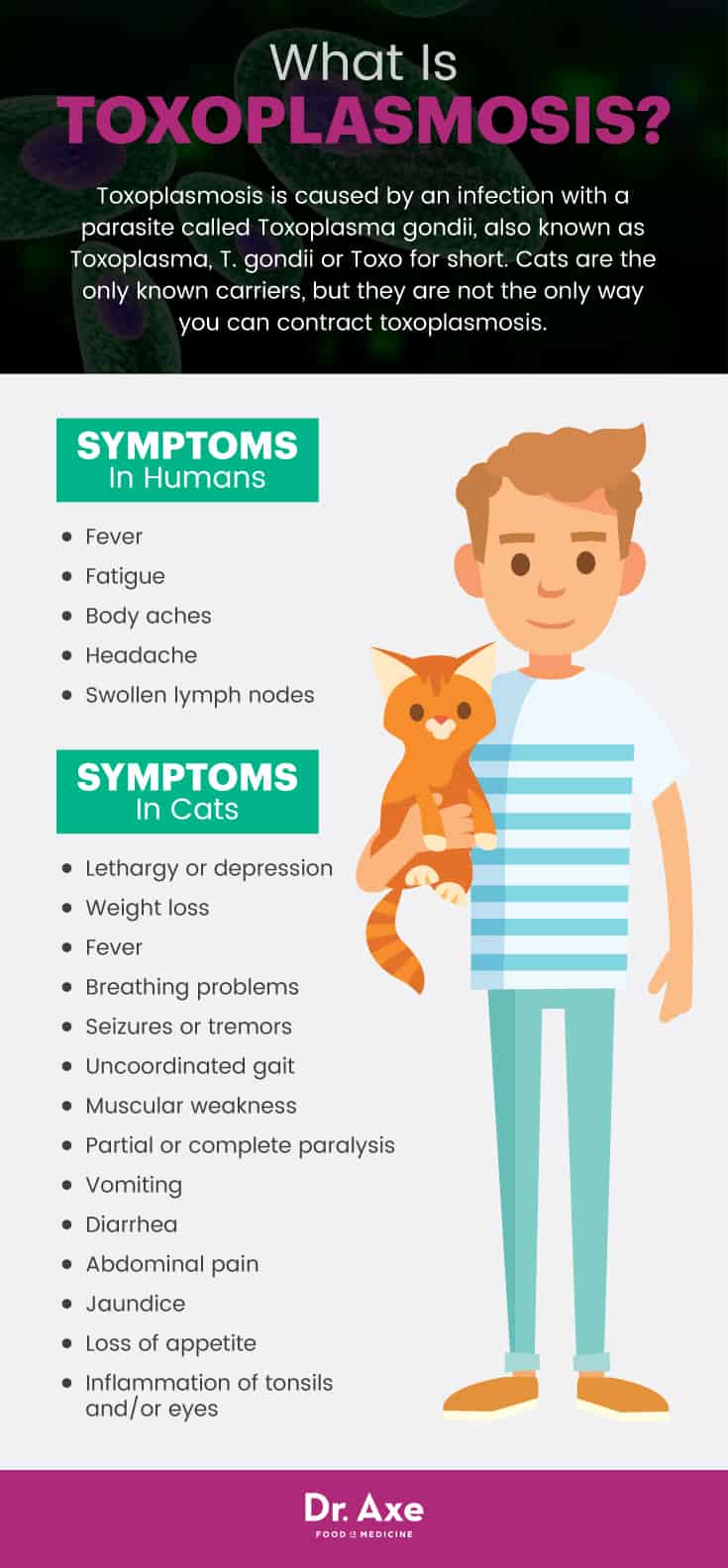This Dr. Axe content is medically reviewed or fact checked to ensure factually accurate information.
With strict editorial sourcing guidelines, we only link to academic research institutions, reputable media sites and, when research is available, medically peer-reviewed studies. Note that the numbers in parentheses (1, 2, etc.) are clickable links to these studies.
The information in our articles is NOT intended to replace a one-on-one relationship with a qualified health care professional and is not intended as medical advice.
This article is based on scientific evidence, written by experts and fact checked by our trained editorial staff. Note that the numbers in parentheses (1, 2, etc.) are clickable links to medically peer-reviewed studies.
Our team includes licensed nutritionists and dietitians, certified health education specialists, as well as certified strength and conditioning specialists, personal trainers and corrective exercise specialists. Our team aims to be not only thorough with its research, but also objective and unbiased.
The information in our articles is NOT intended to replace a one-on-one relationship with a qualified health care professional and is not intended as medical advice.
Cat Parasite Prevention + 8 Natural Toxoplasmosis Treatments
May 22, 2017

Did you know that in the United States alone over 60 million adults and children currently have a parasite called Toxoplasma living inside their bodies? This is a a really large number of people and we’re talking about a parasite that makes the list of 4 Parasites That Want To Invade Your Brain! Brain parasites are nothing to take lightly. Luckily for most people with a normally functioning, healthy immune system, Toxoplasma thankfully doesn’t cause any unwanted symptoms. However, for pregnant women and anyone with a sub-par immune system, toxoplasmosis can be an extremely serious health concern. (1)
The topic of pregnancy and cats is a reason why you may already be somewhat familiar with Toxoplasma gondii and toxoplasmosis. Also called the “cat parasite,” Toxoplasma gondii certainly leaves many questions to be answered when it comes to cats and pregnancy. Do pregnant women and cats mix? What are the symptoms of toxoplasmosis? Is there a toxoplasmosis rash? Can toxoplasmosis really make people more prone to self-directed violence? I’m about to answer all these questions and more.
What Is Toxoplasmosis?
When it comes to foodborne illness in the United States, toxoplasmosis is a top cause of death. The CDC also considers toxoplasmosis one of the five Neglected Parasitic Infections or NPIs. (2) What is toxoplasmosis? Toxoplasmosis is caused by an infection with a parasite called Toxoplasma gondii, also known as Toxoplasma, T. gondii or Toxo for short.
Toxoplasma gondii can be found in humans and several types of animals. But it can only reproduce in the conditions provided by a feline gut. So the parasite lives inside of a cat, reproduces inside of cats and then is excreted in cat feces. According to the CDC, “the only known definitive hosts for Toxoplasma gondii are members of family Felidae (domestic cats and their relatives).” (3)
Aside from litter boxes and anywhere else cat feces can be found, Toxoplasma gondii can also live in contaminated water, soil and dust as well as raw meat, undercooked meat, unwashed fruits and unwashed vegetables. There are three major genotypes of T gondii: type I, type II, and type III. In the United States as well as Europe, the type II genotype is responsible for the majority of cases of toxoplasmosis babies contract in the womb. (4)
Toxoplasma gondii affects about one-third of the worldwide population. It depends upon the immune system of the specific person being affected, but most people have zero to mild toxoplasmosis symptoms. However, symptoms can also be severe in some cases. An article published in the monthly, peer-reviewed medical journal JAMA Psychiatry also reveals that in two clinical studies, mothers with a toxoplasmosis infection appeared to have an increased risk of self-directed violence such as suicide or suicide attempts. (5)
Toxoplasmosis Signs & Symptoms (in Humans & Cats)
Cat virus or human virus — toxoplasmosis definitely affects both species in large numbers. Most healthy humans won’t show any symptoms of toxoplasmosis even when they have it. When humans do show symptoms they are similar to flu symptoms and can include:
- Fever
- Fatigue
- Body aches
- Headache
- Swollen lymph nodes
For people with weakened immune systems, signs of toxoplasmosis are likely to be more intense and may also include:
- Confusion
- Poor coordination
- Seizures
- Rash
- Blurred vision due to severe inflammation of your retina (ocular toxoplasmosis)
- Lung problems that can resemble tuberculosis or Pneumocystis jiroveci pneumonia (PJP), which is a common infection that occurs in people with AIDS.
Even if a mother doesn’t show any signs of infection, she may contract toxoplasmosis during her pregnancy or right before and can have a child with congenital toxoplasmosis. When a baby contracts toxoplasmosis while in the womb, it can be born with the following issues:
- Seizures
- Jaundice
- Enlarged liver
- Rash
- Enlarged spleen
- Severe eye infections
According to Mayo Clinic, not many babies who have toxoplasmosis when they are born show any signs of the infection. It’s even common for children who are born with toxoplasmosis not to have any obvious symptoms until they are in their teenager years, or even older! These latent symptoms can include serious eye infections, mental disability and hearing loss. (6)
Cats are well-known carriers of toxoplasmosis. Cats can get toxoplasmosis by ingesting other cat feces, from infected soil or from any other way they come in contact with the T gondii parasite. Toxoplasmosis in cats is more likely to reveal itself in more obvious clinical symptoms compared to dogs. While dogs can be infected with the parasite, they are not carriers or passers of the parasite. Cats are the only mammals that pass Toxoplasma through their feces. (7) Symptoms are typically at their worst in kittens who get the parasitic infection while in the womb. Due to toxoplasmosis infection, kittens can be stillborn or die before they are weaned.
Wondering if your kitten or cat has toxoplasmosis? Symptoms of toxoplasmosis in cats can include: (8)
- lethargy or depression
- weight loss
- fever
- breathing problems
- seizures or tremors
- uncoordinated gait
- muscular weakness
- partial or complete paralysis
- vomiting
- diarrhea
- abdominal pain
- jaundice
- loss of appetite
- inflammation of tonsils and/or eyes
However, like with humans, it won’t always be apparent that your cat is carrying the parasite. Yet it infects essentially all cats that spend any time whatsoever outdoors. (9)
If your dog is infected with toxoplasmosis, symptoms are similar to cat toxoplasmosis symptoms. Dogs can acquire the infection from ingesting cat feces or from digging around in infected soil. (10)

Causes of Toxoplasmosis
When a cat that carries the Toxoplasma goes the bathroom in a litter box the T. gondii parasite becomes infectious one to five days after it is shed in the feces. If a cat goes to the bathroom outdoors, the T. gondii eggs can remain viable in wet soil without any direct sunlight for a year and a half or even longer!
So how do you get toxoplasmosis? The main cause of toxoplasmosis is ingestion of oocysts, or Toxoplasma eggs. These eggs most often come from the feces of cats so you can get toxoplasmosis from unknowingly consuming these eggs through direct contact with or from handling a cat’s litter box. You can also ingest the parasitic eggs by eating food that comes from soil that contains the parasite or by consuming the raw or undercooked meat of an animal that has consumed the eggs found in cat feces.
Toxoplasmosis is one of the top reasons why it is so important to cook meat thoroughly to about 160°F (this number can be a little lower or higher depending on the meat) or freezing it (0°F) to destroy Toxoplasma parasites. (11) When animals such as sheep and pigs take in soil that has T. gondii eggs from cat feces, the parasites don’t reproduce in these animals (like they do in cats), but the eggs hatch inside of their bodies. Once hatching has taken place then the parasites can get through the intestinal walls and make little cysts in the animal’s tissue.
When raw or undercooked meat from animals containing these cysts is eaten, then it is possible for the parasites inside the animal’s cysts to break apart in our stomachs. Now, the parasites can make a home in our human bodies. I know it sounds pretty gross, which is why it’s so important not to eat undercooked meat of any kind, especially pork and lamb. (12)
It has yet to be proven if contaminated human urine or feces could be a means of transmitting the parasitic infection. However, Toxoplasma gondii has been found in the bladder, kidneys, and intestines of infected humans. This is why it is rare, yet possible, that toxoplasmosis can be transmitted by an organ transplant or blood transfusion. Otherwise, toxoplasmosis is generally considered not to be spread from human to human. (13)
It is also possible for T. gondii to be living in someone’s body in the dormant form. The parasite can remain dormant until something compromises that person’s immune system (like cancer, for example) and then this can trigger toxoplasmosis to occur. (14)
Toxoplasmosis Risk Factors
The parasite that causes toxoplasmosis is found all over the world and it is possible for everyone and anyone to be infected with toxoplasmosis. However, there are certain people that are much more at risk for having toxoplasmosis cause them symptoms and dangerous health issues.
You are more at risk for serious complications from toxoplasmosis if: (15, 16)
- You have HIV or AIDs because it’s common for people living with HIV or AIDs to have a recent toxoplasmosis infection or have an old infection reactivated.
- Anyone with cancer getting chemotherapy since chemotherapy has a negative effect on the body’s immune system and weakens its defenses against infections.
- You are pregnant.The FDA website cites that around 85 percent of pregnant women in the United are at risk of being infected with toxoplasmosis. However, if you had toxoplasmosis before you got pregnant, it’s generally not possible to pass it to your unborn child. If you acquired toxoplasmosis while pregnant this is more concerning, but treatment can reduce any possible risk to your baby.
- You are on steroids or any other immunosuppressant drugs.
The sooner in the course of a pregnancy a woman contracts toxoplasmosis, the more concerning it is for your baby’s health. On the flip side, however, your baby has the greatest likelihood of contracting your infection if you get it in the third trimester, but is least likely to contract it if you developed toxoplasmosis sometime during your first trimester. (17)
Conventional Treatment
Conventional toxoplasmosis treatment typically includes two drugs: pyrimethamine (Daraprim) and Sulfadiazine. Pyrimethamine is also used to treat malaria. It is known to significantly lower folate levels in the body because it can prevent absorption of this important nutrient, which is why it is common for doctors to also advice taking a folic acid supplement while on this medicine. Pyrimethamine side effects can include rapid pulse and breathing, liver toxicity as well as bone marrow suppression. There are many possible side effects of sulfadiazine as well.
A conventional doctor may prescribe the antibiotic spiramycin to a pregnant woman who has toxoplasmosis, but who is carrying a baby that does not have the infection. If testing reveals that your unborn baby is infected with toxplasmosis, a conventional doctor may recommend the prior mentioned drugs (pyrimethamine and sulfadiazine), but only in the 17th week of pregnancy and beyond in extreme situations since these are very risky drugs for pregnant women and their unborn. (18)
8 Natural Treatments for Toxoplasmosis Symptoms
Most people will have toxoplasmosis and not even know it. According to the CDC, “In an otherwise healthy person who is not pregnant, treatment usually is not needed. If symptoms occur, they typically go away within a few weeks to months.” (19) If you have symptoms of toxoplasmosis that are not serious and don’t require medical attention, then there are several natural things you can do to treat toxoplasmosis.
1. General Diet Changes
While trying to fight off parasites of any kind, it is wise to follow The Parasite Cleanse and Diet. You’ll want to avoid certain foods including sugar, processed foods, alcohol, pork, and wheat. On the other, hand you’ll also want to up your intake of certain foods known to have proven or likely anti-parasitic effects including raw pumpkin seeds, almonds, ginger, garlic, daikon radish, kelp, onions, horseradish, cayenne pepper, pomegranate, cabbage, kombucha tea, papaya (including papaya juice and seeds), carrots, lemon and pineapple. (20)
2. Wormwood
Wormwood is definitely one of my top suggestions when it comes to fighting off any type of parasitic infection. It’s actually the source of the key ingredient in the herbal drug artemisinin, which is the most powerful antimalarial on the market proven to even be effective against drug-resistant strains. A parasite also causes malaria, so it’s not too surprising that wormwood is also showing an ability to effectively fight off Toxoplasma gondii. (21)
3. Berberine
According to scientific researchers, the current conventional treatment options for toxoplasmosis are not optimal for multiple reasons and there is a need to find safer, better-tolerated ways to treat this parasitic infection. Research published in 2012 reveals that berberine, a natural plant alkaloid, appears to have the ability to inhibit the parasite that causes toxoplasmosis. (22)
4. Nutmeg Essential Oil
The essential oil of nutmeg appears to be another natural toxoplasma gondii fighter. In vitro studies have shown that nutmeg essential oil displays “significant inhibiting activity” against T. gondii. Researchers believe that nutmeg essential oil shows a lot of promise in the natural treatment of toxoplasmosis. (23)
5. Thyme Essential Oil
Thyme essential oil has been shown in animal studies to get rid Toxoplasma gondii cysts in infected mice. In one 2010 study, researchers gave mice thyme oil at the time of infection and for several days after. The mice who received the thyme essential oil had no intracerebral cysts after treatment. (24)
6. Bunium Persicum Essential Oil
An animal study published in 2015 showed that an essential oil from the Bunium persicum plant appears to fight against toxoplasmosis-causing parasites. Bunium persicum is a relative of the cumin plant. The recent study demonstrated that Bunium persicum (Boiss) essential oil appears to the a source of a new natural agent to combat toxoplasmosis. (25)
7. Homeopathy
A 2015 blind, controlled, randomized study using animal subjects showed that a homeopathic remedy made from the cysts of the T. gondii parasites effectively reduced the number of cysts inside of the animal’s bodies due to toxoplasmosis, which is promising for humans. (26)
8. Radicchio
Another food I recommend adding to your diet is radicchio, which is a bitter and purple leafy vegetable that has many health benefits one of which is anti-parasitic abilities. A pilot study in 2016 looked at radicchio’s impact on parasites. Researchers found a significant anti-parasitic effect of the plant on a particular type of roundworm common in swine. This discovery may indicate a potential benefit of the plant to fight other parasitic growths, so it could only possibly help to add this vegetable to your diet while trying to improve toxoplasmosis symptoms. (27)
Precautions
Severe toxoplasmosis symptoms include confusion, blurred vision, and loss of coordination. If you are exhibiting these extreme symptoms, you should seek urgent medical attention, especially if you know you have a weakened immune system for any reason.
According to the FDA, approximately 50 percent of toxoplasmosis infections in the U.S. yearly are acquired from food. This is why it is so important to cook meat thoroughly. Also, it’s why you should always wash fruits and vegetables well before consuming them. To prevent toxoplasmosis, you should also always wash your hands thoroughly with soap and warm water after touching cat litter, soil, sand, raw meat or unwashed produce. In addition, make sure to wash knives and cutting boards with hot water and soap after every single use.
If you’re pregnant and own a cat, the FDA advises that you don’t have to give up you beloved pet. There are a lot of measures you can take to protect yourself and your unborn baby from a toxoplasmosis infection. Some key precautions to take: (28)
- Ideally have someone else change the litter box and have it cleaned out daily since the T. gondii parasite doesn’t become infectious until one to five days after it is shed in feces.
- If you have to clean the litter box yourself, then make sure to wear disposable gloves and wash your hands thoroughly afterwards.
- Cover any outdoor sandboxes to prevent cats from using them as litter boxes.
- Keep indoor cats indoors and avoid stray cats, especially kittens.
- Do not get a new cat while you are pregnant.
- Never feed your cat raw meat because it can be a source of the T. gondii parasite.
- Put on gloves before gardening or handling sand from a sandbox because these areas may contain cat feces.
- Always wash your hands with soap and warm water after gardening or other outdoor work.
If you’re planning to become pregnant anytime soon, your doctor may check you for the presence of the the T. gondii parasite or you can request such testing. According to the CDC, “If the test is positive it means you have already been infected sometime in your life. There usually is little need to worry about passing the infection to your baby. If the test is negative, take necessary precautions to avoid infection.” (29)
Final Thoughts
Toxoplasmosis is a parasitic infection that is a lot more common than most people realize. Cats are the only known carriers, but they are not the only way you can contract toxoplasmosis. Thankfully, there are ways to keep your furry friend and still protect yourself from this infection. The other good news is that most people don’t have devastating symptoms or have any symptoms at all. There are so many great natural ways to fight against parasites like T. gondii. In addition, maintaining a healthy immune system as well as taking the recommended, easy-to-do precautions (like washing fruits and vegetables well) are smart, natural ways to protect yourself from a toxoplasmosis infection in the first place.








